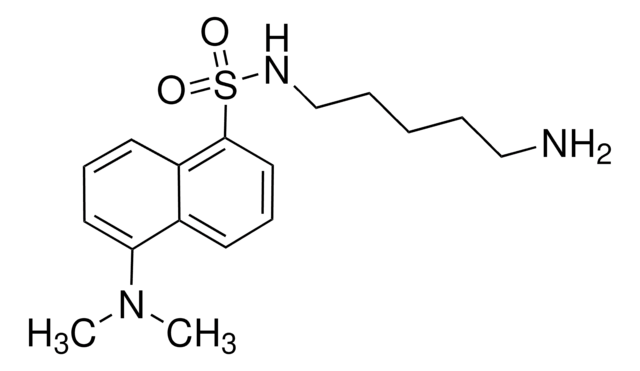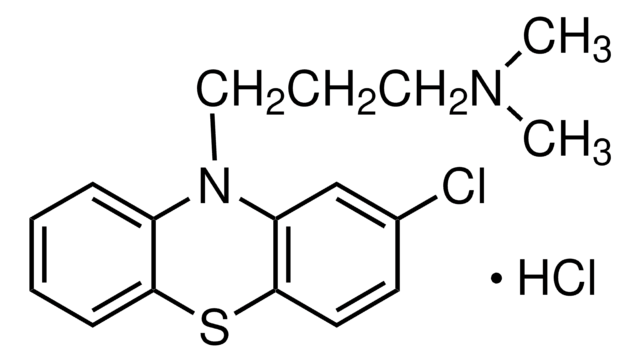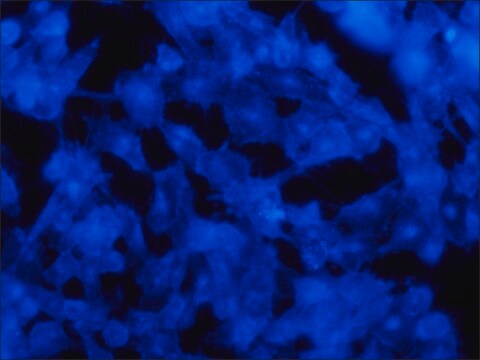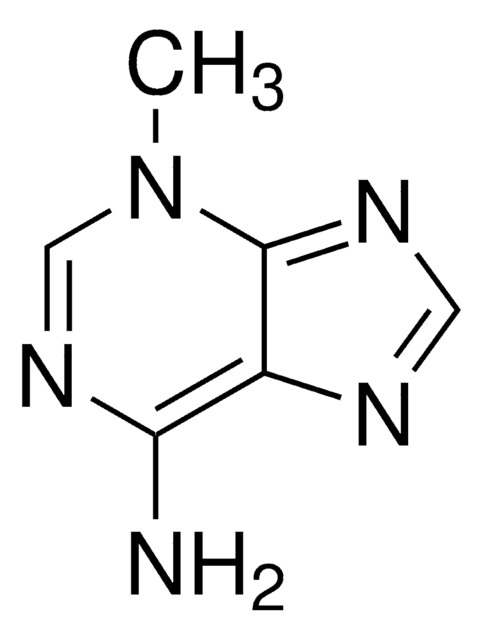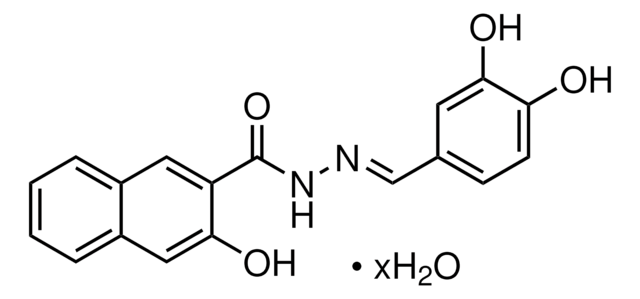Key Documents
D4008
Dansylcadaverine
≥97% (TLC)
Synonim(y):
N-(5-Aminopentyl)-5-dimethylaminonaphthalene-1-sulfonamide, N-(Dimethylaminonaphthalenesulfonyl)-1,5-pentanediamine, Monodansyl cadaverine
About This Item
Polecane produkty
Poziom jakości
Próba
≥97% (TLC)
Postać
powder
temp. przechowywania
−20°C
ciąg SMILES
CN(C)c1cccc2c(cccc12)S(=O)(=O)NCCCCCN
InChI
1S/C17H25N3O2S/c1-20(2)16-10-6-9-15-14(16)8-7-11-17(15)23(21,22)19-13-5-3-4-12-18/h6-11,19H,3-5,12-13,18H2,1-2H3
Klucz InChI
MLEBFEHOJICQQS-UHFFFAOYSA-N
Szukasz podobnych produktów? Odwiedź Przewodnik dotyczący porównywania produktów
Opis ogólny
Zastosowanie
- as an endocytosis inhibitor in human proximal tubular HK-2 cells,(62) mouse J774A.1 macrophages and human A549 epithelial cells(63)
- to label autophagic vacuoles in cardiomyocytes for fluorescence microscopy studies(64)
- in monodansylcadaverine (MDC) staining of fibroblasts in Ankylosing spondylitis (AS) samples(65)
Działania biochem./fizjol.
Opakowanie
Inne uwagi
Hasło ostrzegawcze
Warning
Zwroty wskazujące rodzaj zagrożenia
Zwroty wskazujące środki ostrożności
Klasyfikacja zagrożeń
Eye Irrit. 2 - Skin Irrit. 2 - STOT SE 3
Organy docelowe
Respiratory system
Kod klasy składowania
11 - Combustible Solids
Klasa zagrożenia wodnego (WGK)
WGK 3
Temperatura zapłonu (°F)
Not applicable
Temperatura zapłonu (°C)
Not applicable
Środki ochrony indywidualnej
dust mask type N95 (US), Eyeshields, Gloves
Certyfikaty analizy (CoA)
Poszukaj Certyfikaty analizy (CoA), wpisując numer partii/serii produktów. Numery serii i partii można znaleźć na etykiecie produktu po słowach „seria” lub „partia”.
Masz już ten produkt?
Dokumenty związane z niedawno zakupionymi produktami zostały zamieszczone w Bibliotece dokumentów.
Klienci oglądali również te produkty
Nasz zespół naukowców ma doświadczenie we wszystkich obszarach badań, w tym w naukach przyrodniczych, materiałoznawstwie, syntezie chemicznej, chromatografii, analityce i wielu innych dziedzinach.
Skontaktuj się z zespołem ds. pomocy technicznej